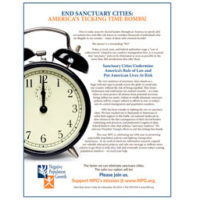
How Millennials Are Slowing U.S. Population Growth and Enhancing Sustainability
- Edwin S. Rubenstein
- November 14, 2017
- Forum Papers
- Forum Paper
- 0 Comments
![]() Your gift helps publish and distribute materials like this.
Your gift helps publish and distribute materials like this.
Click here for a downloadable, printable PDF version
HOW MILLENNIALS ARE SLOWING U.S. POPULATION GROWTH AND ENHANCING SUSTAINABILITY
An NPG Forum Paper
by Edwin S. Rubenstein
November 2017
They are stressed out. Afraid to take risks. The cheapest generation of Americans, say some, preferring to rent rather than buy, share rather than own, and yet complete spendthrifts when it comes to procuring the latest and greatest cell phones, i-pads, and other digital technologies. They marry later, have less income, and fewer children, than prior generations did at similar stages of life. And, in late 2015, millennials passed Baby-Boomers as the most populous generation of Americans.
Born between 1980 and 2000, millennials are the youngest Americans in the labor force. Their attitudes towards marriage, procreation, and materialism cannot be attributed to their youth. Nor is it a fad they will outgrow. While the Great Recession is responsible for some of their worldview, it seems that long lasting economic and demographic trends – wage stagnation, urban gentrification, high gas prices, the sharing economy, on-line consumption, and an unprecedented student loan crisis – has fundamentally changed the game for millennials.
The largest generation of Americans may never have as many children, or spend as lavishly as its parents. Most mainstream economists find this prospect daunting, as it portends lower GDP growth. For us, however, negative growth in both population and consumption is nothing less than a perfect storm. Should it continue, NPG’s goal of a sustainable U.S. economy, in which the utilization of scarce resources equals the ability of our eco-system to replenish those resources, will be attainable.
Let us count the ways this can occur.
FALLING BIRTH RATES
The United States is in the middle of what some call a “baby bust”. According to the Centers for Disease Control and Prevention, the number of babies born in this country fell by 338,000 – or 8.7% between 2007 (the year prior to the Great Recession) and 2016. Over that period the national fertility rate (births per 1,000 women of childbearing age, 15 to 44) fell from 69.3 to an historic low, 62.0, in 2016. At the peak of the post World
War II Baby Boom, in 1960, the rate was 118.0. […]
Continue reading the full Forum paper by clicking here.
Ed Rubenstein, president of ESR Research, is an experienced business researcher, financial analyst, and economics journalist. He has written extensively on federal tax policy, government waste, the Reagan legacy, and – most recently – on immigration. He is the author of two books: The Right Data (1994) and From the Empire State to the Vampire State: New York in a Downward Transition (with Herbert London). His essays on public policy have appeared in The Wall Street Journal, The New York Times, Harvard Business Review, Investor’s Business Daily, Newsday, and National Review. His TV appearances include Firing Line, Bill Moyers, McNeil-Lehr, CNBC, and Debates-Debates. Mr. Rubenstein has a B.A. from Johns Hopkins and a graduate degree in economics from Columbia University.

